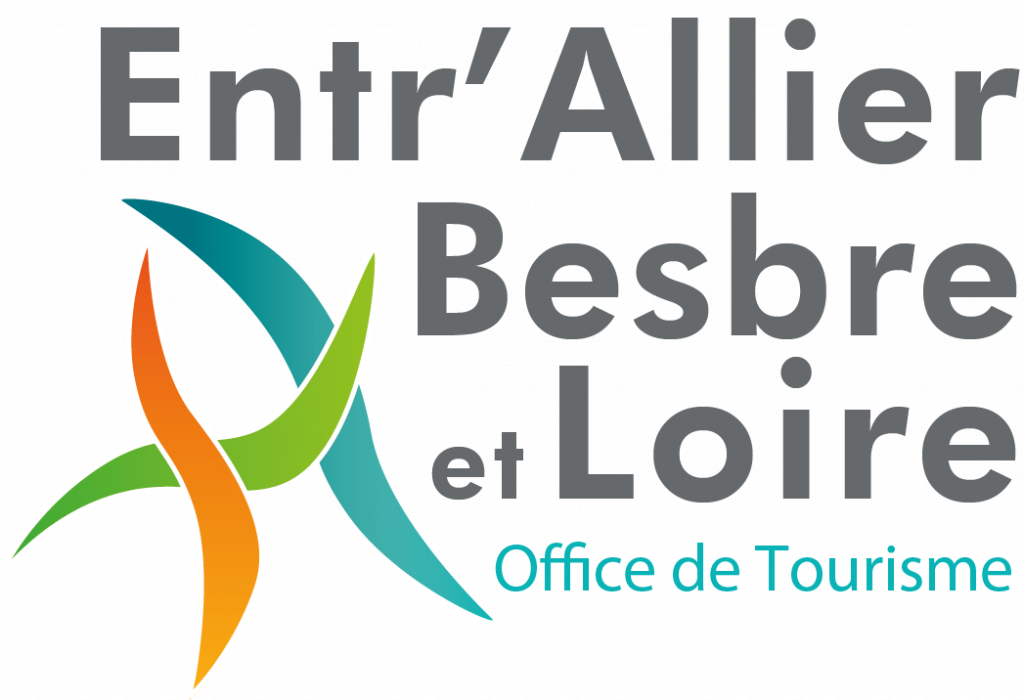Montaigu-le-Blin évoque, par la première partie de son nom, l’idée de montagne plus ou moins haute (monte acuto, mons acutus, …). L’origine de la seconde partie du nom est moins évidente, mais correspondant assez vraisemblablement à un prénom du Moyen-Age porté alors par l’un des premiers seigneurs du lieu : Bleyn (ou Blayn).
Montaigu-le-Blin, en Forterre (« forte-terre ») se caractérise par son sol argilo-calcaire aujourd’hui très propice à l’agriculture (ce fut loin d’être le cas dans le passé ; cf. ci-après) et ses collines appelées puys ou (plus couramment, en langage local) « tureaux ». Ces tureaux se présentent un peu comme les premiers contreforts des Monts de la Madeleine et du Forez.
Ce pays au sol gras, profond, humide, couvert de marécages et de forêts, fut quasiment inhabité avant la conquête de César qui y installa la tribu errante des Boïens qui devinrent de rudes paysans.
On peut voir aujourd’hui diverses traces du passé gallo-romain et notamment celles d’une enceinte (opidium?) sur le tureau de Chassemiane ainsi que la voie romaine qui allait de Vichy (Aquis Calidis) à Autun (Augustodunum) avec, sur son bord, une croix celtique au lieu-dit Presles.
Le nom de Montaigu apparaît pour la première fois, en 1095, dans une bulle du Pape Urbain II énumérant les propriétés des sires de Bourbon et attestant de la fondation, à Monte-Acuto, d’un prieuré bénédictin dépendant du site clunisien de Souvigny et dont les seules traces subsistant aujourd’hui sont l’église et la maison Charmedieu (tout près de cette dernière).
Les moines furent alors d’infatigables artisans du défrichement et de l’assainissement des sols marécageux.
Mais l’époque de l’ascétisme et des grands travaux de défrichement s’achève à partir du milieu du XIIème siècle. L’assainissement complet qui, seul, aura permis de livrer à la culture les terres fertiles que nous connaissons aujourd’hui fût, pour l’essentiel, l’œuvre du XIXème siècle.
La commune de Montaigu-le-Blin, telle que nous la connaissons aujourd’hui, résulte d’un regroupement, effectué en 1832, avec deux autres paroisses : Ciernat et Saint-Etienne-du-Bas. Le nom de Ciernat subsiste de nos jours et désigne un hameau du village. Le nom de Saint-Etienne-du-Bas (pourtant, à l’époque la plus importante des trois paroisses, tant en superficie qu’en nombre d’habitants) a depuis lors totalement disparu.
Du milieu du XIXème siècle à la Grande Guerre, la population de Montaigu est quasiment restée stable au voisinage de 1 000 habitants. A l’instar de l’évolution générale du monde rural, elle n’a cessé de décroître jusqu’au début du XXIème siècle et est aujourd’hui stable, voire en très légère augmentation.
Au début du XXème siècle, Montaigu-le-Blin comptait de nombreux commerces et ateliers d’artisans (vingt-quatre noms recensés au registre du commerce de 1908 par exemple) : maçons, menuisiers, maréchaux-ferrant, charpentiers, charrons, tailleurs d’habit, meuniers, boulangers, épiciers, bouchers, aubergistes, marchand de vin, distillateur, …
En 1929, la liste des électeurs à la Chambre départementale d’Agriculture comportait encore cent soixante-deux noms. La dernière foire aux bovins s’est tenue sur la Place en 1958. Village de tradition agricole Montaigu joue aujourd’hui pleinement la carte de l’Europe par la présence de quelques familles portugaises, hollandaises et même anglaises (en résidence principale ou secondaire).
Aujourd’hui, Montaigu, eu égard à son patrimoine architectural et paysager, affiche avant tout une image de village orienté vers le tourisme avec trois structures de restauration, un camping privé et divers gîtes et chambres d’hôtes. Quelques artisans demeurent sur place (maçon, plâtrier-peintre, fromager, …) et les terrains agricoles sont désormais répartis en une poignée d’exploitations.
Le village dispose par ailleurs d’une école (en regroupement pédagogique avec une commune voisine) et d’une garderie permettant aux jeunes parents de concilier vie professionnelle et scolarité de leurs enfants ; un service très apprécié et fortement utilisé.
The first part of the name Montaigu-le-Blin evokes he idea of a mountain more or less high (monte acuto, mons acutus, …). The second part of the name is less obvious, but it probably corresponds to a first name from the Middle Ages, which was then borne by one of the first lords of the place: Bleyn (or Blayn).
Montaigu-le-Blin, in Forterre (« forte-terre ») is characterized by its clay-limestone soil, which is now very suitable for agriculture (this was far from being the case in the past; see below) and its hills called puys or (more commonly, in local language) « tureaux ». These « tureaux » are somewhat like the first foothills of the Monts de la Madeleine and Forez.
This country with greasy, deep, humid soil, covered with swamps and forests, was almost uninhabited before the conquest of Caesar who installed there the wandering tribe of the Boïens who became rough farmers.
Today, we can see various traces of the Gallo-Roman past and, in particular, those of an enclosure on the bull of Chassemiane as well as the Roman way which went from Vichy (Aquis Calidis) to Autun (Augustodunum) with, on its edge, a Celtic cross at the location called Presles.
The name of Montaigu appeared for the first time in 1095, in a bull of the Pope Urbain II enumerating the properties of the sires of Bourbon and attesting to the foundation, in Monte-Acuto, of a Benedictine priory depending on the Cluniac site of Souvigny and of which the only traces remaining today are the church and the Charmedieu house (close to the latter).
The monks were then tireless artisans of clearing and rehabilitating the marshy grounds.
The period of asceticism and great clearing works came to an end in the middle of the 12th century. The complete sanitation which allowed to deliver to the culture the fertile grounds which we know today was made in the 19th century.
The town of Montaigu-le-Blin results from a grouping, carried out in 1832, with two other parishes: Ciernat and Saint-Etienne-du-Bas. The name of Ciernat remains today and designates a hamlet of the village. The name of Saint-Etienne-du-Bas (at the time the largest of the three parishes, both in terms of area and number of inhabitants) completely disappeared.
From the middle of the 19th century to the Great War, the population of Montaigu remained almost stable at around 1,000 inhabitants. Like the evolution of the rural world, it has continued to decrease until the beginning of the 21st century and is now stable or even slightly increasing.
At the beginning of the 20th century, Montaigu-le-Blin had many trades and workshops (twenty-four names listed in the 1908 trade register for example): bricklayers, carpenters, blacksmiths, tailors, millers, bakers, grocers, butchers, innkeepers, wine merchants, distillers, …
In 1929, the list of voters for the Departmental Chamber of Agriculture still contained one hundred and sixty-two names. The last cattle fair was held on the square in 1958. Montaigu, a village with a long agricultural tradition, is now fully European with the presence of a few Portuguese, Dutch and even English families (as their main or secondary residence).
Today, Montaigu, with its architectural and landscape heritage, displays above all an image of a village oriented towards tourism with three restaurant structures, a private campsite and various cottages and guest rooms. A few craftsmen remain on site (bricklayers, plasterer-painter, cheesemaker, …) and the agricultural land is now divided into a handful of farms.
The village also has a school and a daycare center allowing young parents to reconcile their professional life and their children’s education; a service that is much appreciated and strongly used.


